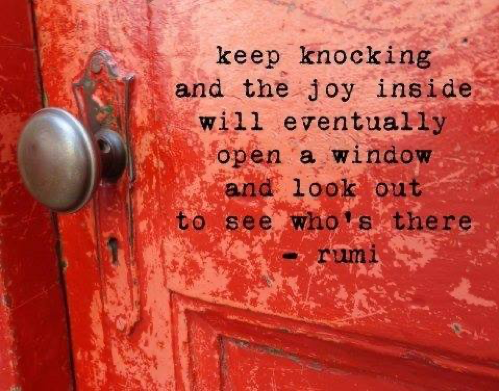In Connecting an Idea, I’d like to extend the last blog on Welcoming an Idea, which started with sharing a poem by John O’Donohue, On Meeting a Stranger and some thoughts about creating a safe space for ourselves and others, starting with dropping our conditioned ways of judging and trying to change the other, and acknowledging our habits and how they’ve served us, and offering them a compassionate retirement, like leaves gently falling to the ground. In this blog, let’s play with some additional tree metaphors and connecting to dignity, ourselves, and each other.
How do we create a safe space in which another can enter – into a conversation, into a house or office, into a gathering of some sort – so that “unknown between us” can flower into discovery and lead us into new territory, beyond our familiar ways of seeing and being, beyond habit?
We can be curious. We can open to wonder. We can consider each other not as “other” and separate from ourselves, but rather as an extension of ourselves. Consider this – that all of us are members of the same family in some way, we are each trees the forest of humanity, descended from some common seed. If we look for our common ground rather than our differences, we can create connections rather than divisiveness. Recently a treasured friend shared her love of trees as a metaphor for human beings, how a grove of trees communicates via its roots, and how we are all connected.
Take a moment to explore embodying this notion. Choose a beautiful tree to observe in your yard, a park nearby, or envision one in your mind. See its shape and size, notice and feel the texture of its bark, the pattern of its branches, the shape and color of its leaves. You might even stand as this tree and come into your full upright length – lengthening into your dignity, extending upwards towards the sky through the crown of your head, and feeling your feet on the ground and extending your roots below the surface and outward to anchor yourself and feel stable. From this place – sensing into our ground and our dignity, it is easier to see and appreciate the beauty of other trees.
What are the values that inspire and lift you up as well as root and ground you and give you stability? Who and what matter most?
Then you might extend your arms outward and/or upward like branches reaching out from your trunk, taking in the light, offering shade and shelter and safe refuge for other living things. As your tree flowers in the spring and bears fruit in the summer or fall, it may be visited by bees and other pollinators, its fruit might be picked and enjoyed in the moment or made into a pie or a crisp, or maybe it serves as a thing of beauty. In extending our branches, we are broadening into the realm of social relationships, of connecting with others, of belonging and community.
Who are the individuals and groups with whom you have strong, deep, or long-lasting connections? Who makes up your “tribe”? Who do you want to reach out to and connect with? What can you do to include others, even those who see things differently than you do?
Inclusivity is a primary leadership competency. We can embody this competency by extending our good intentions, our warmth and our care into the space around us, our “peripersonal space”, as Wendy Palmer, author, teacher, and holder of a sixth-degree black belt in Aikido, calls it. She says that we can practice this primary leadership competency of inclusiveness by centering ourselves: inhaling, lengthening, expanding up the back; exhaling, softening and opening down the front, extending our energy into the peripersonal space like and expanding bubble, and settling – allowing our energy to drop lower (making friends with gravity) to help ground us and include everyone in the room…which could be a very useful practice in preparation for a board meeting or a holiday dinner party where there may be mixed opinions and less than smooth relationships at times! Try it the next time you are in a grocery check-out line or waiting in traffic. Send some good vibes to someone and see what happens.
This isn’t to say we have to accept and approve of everyone and everything that comes our way or conflicts with our values and morals. Our dimension of width is also about boundaries – who and what we let in and who and what we let out. In this dimension, we can include others, even if we do not agree with their opinions or ideologies. When we do that, we open the doors to curiosity and connection and possibility rather than shutting one another out.
George Leonard, author Mastery, and The Life We Are Given (with Michael Murphy), wrote:
“It is my fervent wish that everyone of us can become aware of the interconnectedness of all existence, however it is defined, and that we might pause long enough each day to experience the miracle of consciousness, the gift of time. In this experience and in the awareness of our interconnectedness, we might discover that there is no space at all for envy, hatred, or thoughts of revenge. Only for love.”
~ George Leonard, The Silent Pulse, p. 173
What if love is all there is? How might we pause long enough to be more conscious of time and our interconnectedness, our desire for dignity and belongingness?
You might listen to John Lennon's Imagine for a little inspiration:
You might not agree with all the lyrics, and by shifting how we think and see things and each other, we can connect with others rather than create division. As the holidays approach, there’s no better time to practice lengthening into our dignity and extending into our capacity to connect with what’s dear to our hearts and with each other.
Next time, we’ll explore the dimensions of depth and care. Thanks for reading








